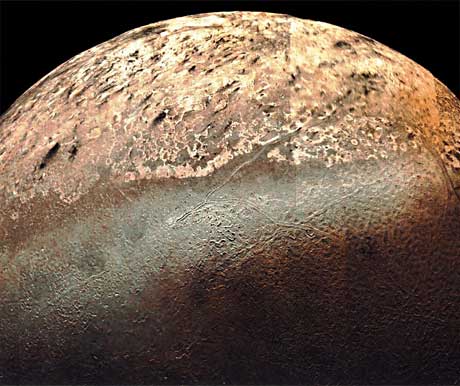
|
Lobby > Exhibits > Hot Water Treasures > Global Context > Out of This World > Triton Out of This WorldTRITON During the summer of 1989, NASA’s Voyager 2 spacecraft discovered the dark plumes of geysers rising approximately five miles (eight kilometers) above the surface of Neptune’s largest moon, Triton. The geysers of Triton are likely composed of nitrogen frost and organic compounds, and eruptions may last up to a year. Their presence is extraordinary in a world with an average temperature of approximately -400 °F (-240°C).  Scientists think the heat necessary for an eruption may come from several sources. Triton orbits Neptune in a retrograde orbit—that is in a direction opposite to Neptune’s rotation. This causes gravitational stress, generating heat inside Triton. Also, the surface of Triton is thought to be composed of a semi-transparent layer of frozen nitrogen. Solar energy, although very weak, likely creates a kind of greenhouse effect, heating the frozen material until it erupts. |
|
||||||||||||||||||||||||||||||



